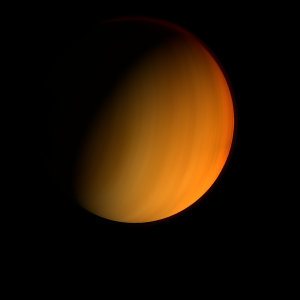|
|
Space Astro
|
Info for exoplanet "Teusto"
| Scientific (actual) data |
|---|
| Name | MARVELS-13 b |
| Planet status | Confirmed |
| Mass sini | 41.8 |
| Orbital period | 147.6 |
| Semi major axis | 0.54 |
| Orbit eccentricity | 0.5 |
| Discovered | 2017 |
| Updated | 2019-02-15 |
| Omega | 196.7 |
| Tzero vr | 2455010 |
| K | 1868 |
| Publication | Published in a refereed paper |
| Detection type | Radial Velocity |
| Star name | GSC 03467-00030 |
| Right ascension | 206.34° |
| Declination | 48.44° |
| Mag v | 12.2 |
| Star distance | 212.63 |
| Star metallicity | -0.17 |
| Star mass | 0.96 |
| Star radius | 1.03 |
| Star temperature | 5525 |
| Star alternate names | 2MASS J13452055+4826405 |
| Wikipedia article | MARVELS-13 b |
Back
| |
| Fictional info (?) |
|---|
| Suggested name | Teusto |
| Planet type | Cold planet |
| The largest moon, Thagel, has a diameter greater than that of the planet Mars. |
| Atmosphere | Nitric oxide | 70% |
| Xenon | 20% |
| Nitrogen | 8% |
| Hydrogen peroxide | 0.62% |
| Hydrogen chloride | 0.55% |
| Hydrogen | 0.0089% |
| Carbon monoxide | 0% |
| Atmospheric pressure | 0.6 bar |
 |
| Moon | Thagel | Huge potato shaped ice moon |
| Isojot Si | Small round rocky moon |
| Orixpro | Very small slightly egg-shaped oceanic asteroid |
| Google search for Teusto |
|
Website by Joachim Michaelis
|
|
|
|